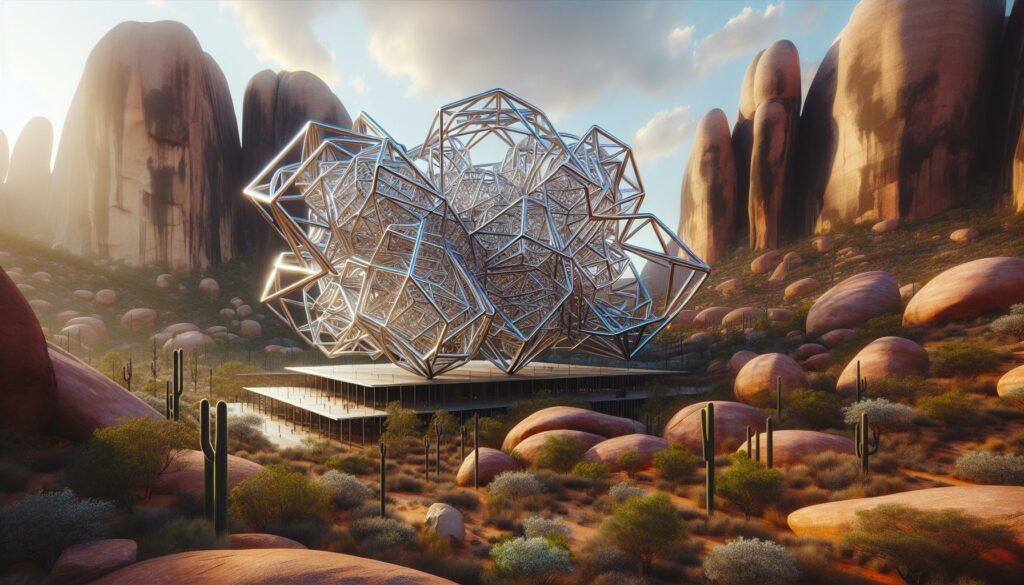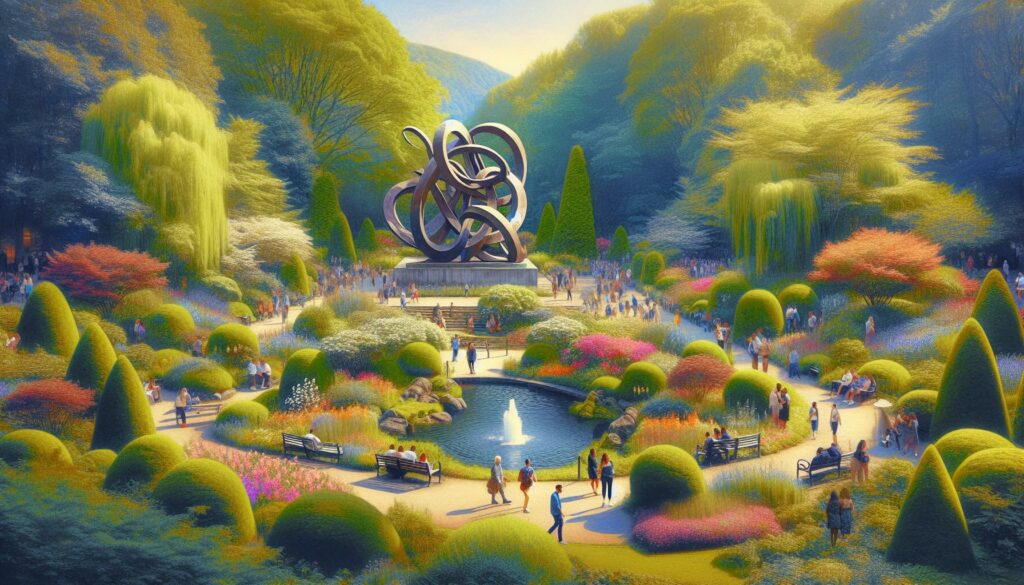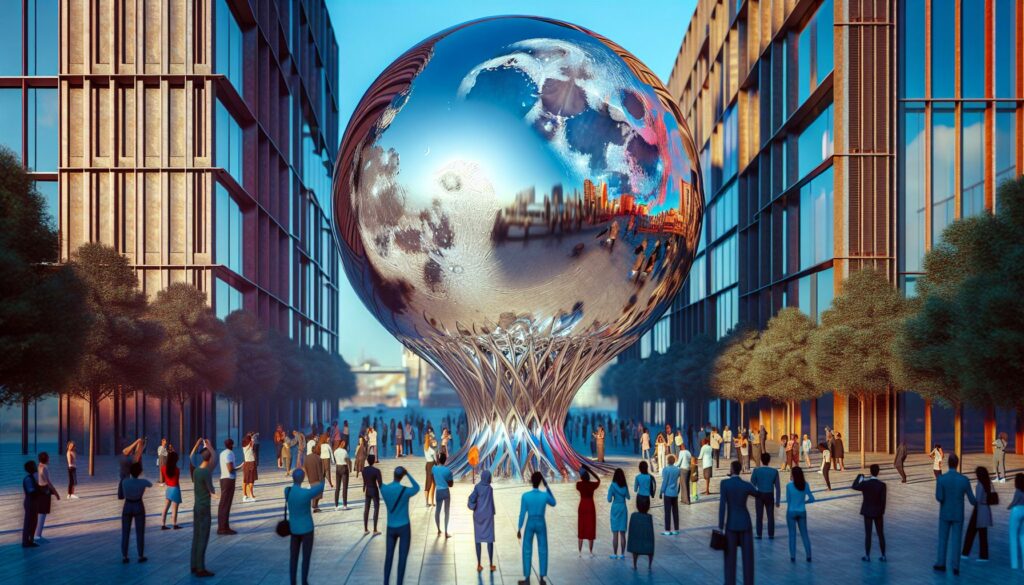Nestled in the stunning landscape of Joshua Tree, the Transmission Sculpture stands as a captivating fusion of art and nature. This striking installation draws visitors from all over, inviting them to explore its unique form and the meaning behind it. I’ve always been fascinated by how art can reflect the environment it inhabits, and this sculpture is a perfect example of that synergy.
As I wandered through the rugged terrain, I couldn’t help but feel a connection to both the artwork and the breathtaking desert surroundings. The Transmission Sculpture not only captivates the eye but also sparks curiosity about its creator and the inspiration behind it. In this article, I’ll delve into the story of this remarkable piece and explore why it’s become a must-see destination for art lovers and adventurers alike.
Key Takeaways
- Art and Nature Fusion: The transmission sculpture joshua tree exemplifies the harmonious relationship between art and the natural landscape of Joshua Tree National Park, enhancing visitors’ experiences.
- Symbolism of Connectivity: Created by John David O’Brien, the sculpture symbolizes the intersection of technology and nature, encouraging reflection on environmental consciousness and human connectivity.
- Innovative Design Features: The use of stainless and corten steel provides durability and reflects light, creating dynamic visual effects that engage viewers through different perspectives.
- Impact on Local Community: The sculpture elevates local tourism and fosters pride among residents, serving as a landmark that promotes art appreciation and environmental awareness.
- Visitor Experience: Many visitors find the Transmission Sculpture transformative, praising its stunning aesthetics and its seamless integration with the desert surroundings, enhancing their Joshua Tree adventure.
- Educational Initiatives: The sculpture also plays a role in community engagement through environmental workshops and events that emphasize sustainability and conservation efforts.
Transmission Sculpture Joshua Tree
Transmission Sculpture, created by artist John David O’Brien, stands prominently in Joshua Tree National Park. The installation features a series of interlocking metal forms, which reflect the desert’s natural light while harmonizing with the rugged landscape. This artwork captures the essence of its environment, enhancing the experience for visitors.
O’Brien designed the sculpture to symbolize connectivity, embodying the relationship between technology and nature. The intricate patterns evoke a sense of movement, engaging viewers as they explore the site. Each angle reveals a new perspective, inviting visitors to interact with the piece.
The location of Transmission Sculpture adds to its allure. Nestled among boulders and native plants, it offers an immersive experience that encourages reflection and appreciation for the natural world. Visitors often find that the juxtaposition of the sculpture against the desert backdrop creates a compelling visual narrative.
Transmission Sculpture attracts art lovers and nature enthusiasts alike. The installation’s reputation has grown, making it a must-see destination for those exploring Joshua Tree. Its unique design and thoughtful execution engage the community, fostering a deeper connection to art and the surrounding environment.
Historical Significance
Transmission Sculpture holds a significant place in the narrative of contemporary art within natural settings. It reflects the evolving dialogue between artistic expression and environmental consciousness.
Background of the Sculpture
The sculpture emerged in 2018, conceptualized by artist John David O’Brien. Created as part of a larger initiative to integrate art into the diverse landscape of Joshua Tree National Park, it embodies innovative design. O’Brien’s work draws inspiration from the area’s unique geology and cultural history. The sculpture’s materials, often reflective of industrial techniques, contrast yet harmonize with the natural environment. As a destination, it attracts both art aficionados and casual visitors interested in the intersection of creativity and nature.
Artist’s Vision and Intent
O’Brien intended for Transmission Sculpture to provoke thought about technology’s relationship with nature. He envisioned an immersive experience that encourages exploration and contemplation. The interlocking metal structures symbolize connectivity, mirroring the intricate networks of both nature and human innovation. Through the dynamic interplay of light and shadow on the sculpture’s surface, O’Brien evokes a sense of movement, inviting visitors to engage with the artwork in a personal and meaningful way. His vision extends beyond aesthetics, aiming to inspire a dialogue about environmental stewardship and the role of art in fostering a deeper appreciation for our natural surroundings.
Design and Features
The Transmission Sculpture showcases a thoughtful design that intricately combines materials and structural elements, enhancing its connection to the landscape of Joshua Tree National Park.
Materials Used
I appreciate the use of metal in the Transmission Sculpture, specifically stainless steel and corten steel. These materials provide durability and weather resistance, allowing the artwork to withstand the harsh desert climate. The reflective surface of stainless steel captures and refracts light, creating mesmerizing visual effects throughout the day. Corten steel develops a distinctive patina, blending seamlessly with the natural hues of the surrounding landscape over time. This choice of materials not only emphasizes the relationship between art and nature but also promotes sustainability by using locally sourced elements.
Unique Structural Elements
I notice the interlocking metal forms that characterize the sculpture, creating dynamic shapes that change with the viewer’s perspective. The design incorporates geometric patterns and open spaces, encouraging exploration. These unique structural elements evoke a sense of movement, reminiscent of waves or flowing energy, which enhances the immersive experience. The varying heights and angles provoke curiosity and invite interaction, making the sculpture a multifunctional piece that serves as both art and a landmark, fostering a deeper engagement with the natural environment.
Impact on the Local Community
The Transmission Sculpture significantly influences the local community, acting as a focal point for art appreciation and environmental awareness in Joshua Tree. Its presence cultivates not just tourism but also a sense of pride and connectedness among residents.
Visitor Reactions
Visitors consistently express awe and admiration for the Transmission Sculpture. Many describe the experience as transformative, citing the artwork’s ability to blend seamlessly with the surrounding landscape. The interplay of light and shadow captivates photographers and art enthusiasts alike. Feedback on social media highlights the sculpture’s stunning visual appeal and its role in enhancing their desert experience. Local businesses benefit as tourists often seek nearby accommodations and services after visiting this iconic installation.
Integration with Surroundings
The Transmission Sculpture’s thoughtful design showcases a harmonious relationship with its environment. Its materials, including stainless steel and corten steel, complement the rugged terrain while enhancing the visual dialogue between art and nature. The sculpture’s positioning among native plants and boulders invites exploration and creates a serene atmosphere. This integration encourages visitors to engage intimately with both the artwork and the natural landscape, fostering a deeper appreciation for Joshua Tree’s unique ecology. Environmental workshops and events held near the sculpture further emphasize its role in promoting sustainability and conservation within the community.
Art Installation
Experiencing the Transmission Sculpture Joshua Tree is truly transformative. It’s more than just an art installation; it’s a bridge between technology and nature. I’ve found that standing among its interlocking forms invites a deeper appreciation for both art and the stunning desert landscape.
This sculpture not only captivates the eye but also sparks meaningful conversations about our relationship with the environment. It’s a reminder of how art can inspire us to reflect on our surroundings and engage with the world in a more thoughtful way. Visiting the Transmission Sculpture is an opportunity to connect with both creativity and the natural beauty of Joshua Tree, making it a must-see for anyone exploring this unique area.



